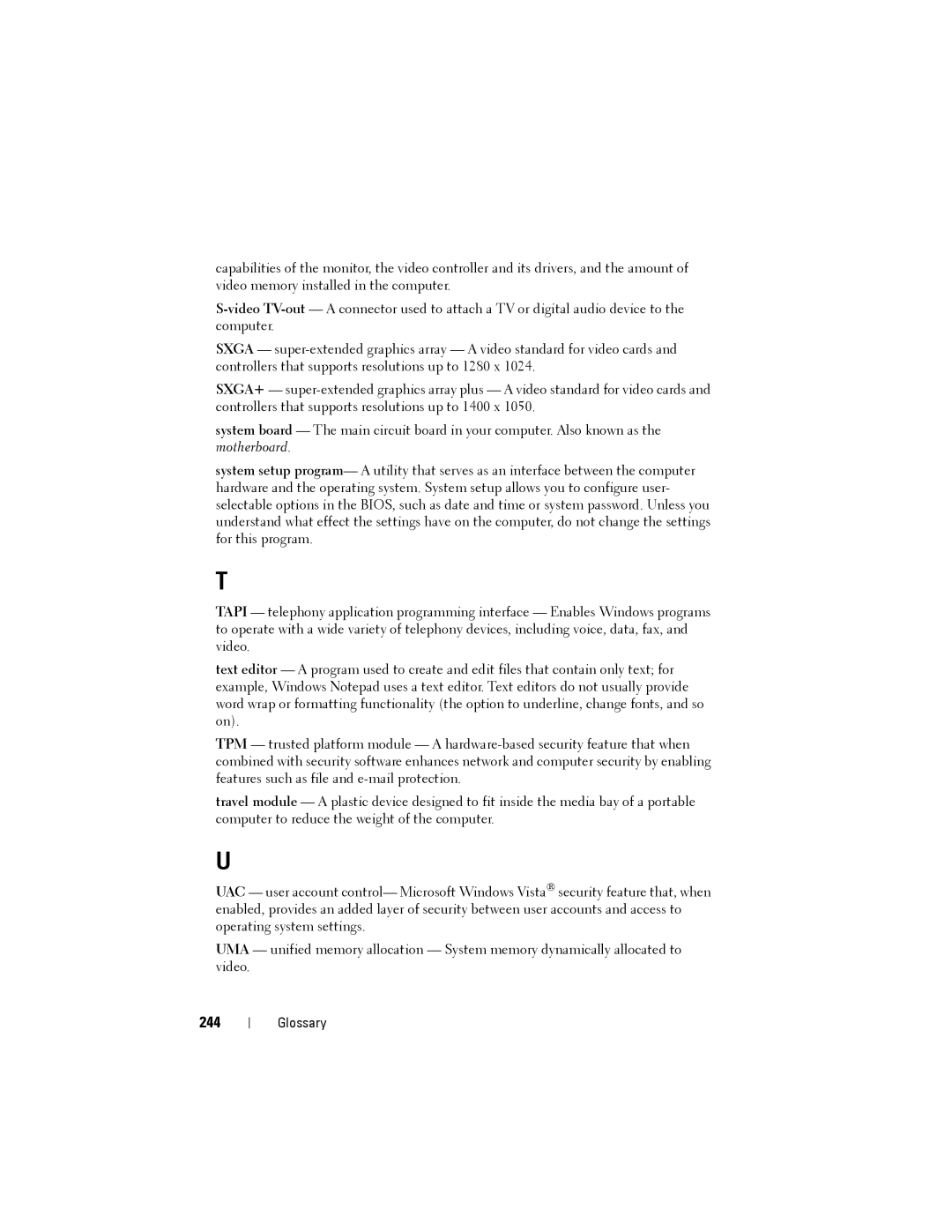capabilities of the monitor, the video controller and its drivers, and the amount of video memory installed in the computer.
SXGA —
SXGA+ —
system board — The main circuit board in your computer. Also known as the motherboard.
system setup program— A utility that serves as an interface between the computer hardware and the operating system. System setup allows you to configure user- selectable options in the BIOS, such as date and time or system password. Unless you understand what effect the settings have on the computer, do not change the settings for this program.
T
TAPI — telephony application programming interface — Enables Windows programs to operate with a wide variety of telephony devices, including voice, data, fax, and video.
text editor — A program used to create and edit files that contain only text; for example, Windows Notepad uses a text editor. Text editors do not usually provide word wrap or formatting functionality (the option to underline, change fonts, and so on).
TPM — trusted platform module — A
travel module — A plastic device designed to fit inside the media bay of a portable computer to reduce the weight of the computer.
U
UAC — user account control— Microsoft Windows Vista® security feature that, when enabled, provides an added layer of security between user accounts and access to operating system settings.
UMA — unified memory allocation — System memory dynamically allocated to video.
244
Glossary
